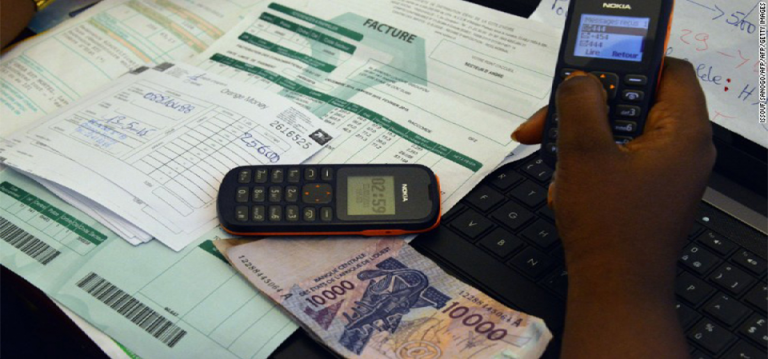
A recent report by Oui Capital, an Africa-focused venture capital firm, has revealed that Africa’s cross-border payments market, which is currently valued at $329 in 2025, is expected to reach $1 trillion in 2035.
Key drivers such as increased regional trade, growing migration, mobile money penetration, and fintech innovation are reshaping how money moves across borders. Yet, inefficiencies persist, costing consumers and businesses billions annually. High fees, currency volatility, fragmented regulations, and limited interoperability continue to hinder progress.
Despite these barriers, opportunities abound. Africa had 781 million registered mobile money accounts in 2022, with a staggering $837 billion in transaction volumes 66% of global mobile money transactions. Fintech solutions are significantly reducing remittance costs, with digital channels averaging 3.5% fees compared to the traditional 8–12%, and enabling near-instant transfers.
Register for Tekedia Mini-MBA edition 19 (Feb 9 – May 2, 2026): big discounts for early bird.
Tekedia AI in Business Masterclass opens registrations.
Join Tekedia Capital Syndicate and co-invest in great global startups.
Register for Tekedia AI Lab: From Technical Design to Deployment (next edition begins Jan 24 2026).
SMEs are driving intra-African trade, increasingly leveraging digital tools to simplify cross-border commerce. But deeper structural issues remain:
- Remittance fees still average 7.4–8.3%, the highest globally.
- Only 55% of African countries allow electronic KYC, creating repetitive compliance burdens.
- FX liquidity issues and inconsistent policies in countries like Nigeria lead to $5 billion in extra costs annually, driven by offshore clearing and double currency conversions.
Key Growth Drivers Cross-Border Payments in Africa
1. Regulatory Reforms – PAPSS & AfCFTA
The Pan-African Payment and Settlement System (PAPSS), launched in 2022, enables instant cross-border payments in local currencies—cutting out the need for dollar clearing and potentially saving up to $5 billion annually.
Alongside this, the African Continental Free Trade Area (AfCFTA) is working to harmonize financial systems across member states, reducing dependence on SWIFT and foreign banking intermediaries, and fostering a more integrated African financial market.
2. Mobile Money Penetration
Mobile money is revolutionizing remittances in Sub-Saharan Africa, now processing 30% of all SSA remittance flows—valued at $16 billion in 2022. With transaction volumes growing 22% year-over-year and mobile remittance growth at 48% annually, these platforms offer significantly lower transaction fees (1.5%–3%) compared to traditional banks (7%+), making them a more accessible option for cross-border transfers.
3. Regional Migration, Trade & Urbanization
Intra-African remittances reached $20 billion in 2022, highlighting the impact of increasing regional migration and urbanization. These dynamics are fueling South-South remittance corridors, strengthening regional financial ties, and driving demand for efficient, affordable payment solutions.
Growing intra-African trade is also accelerating the adoption of digital payment tools across borders, enhancing financial inclusion and economic integration.
Notably, the report revealed that Digital transfers have significantly reduced remittance fees from 7.4% to 3% or lower, saving migrants $4 – $5 billion annually while making cross border payments more affordable. Additionally, PAPSS and fintech APIs have the potential to eliminate $5 billion in correspondent banking fees, further accelerating transactions and lowering costs.
With every 1% reduction in remittance fees, African families save an estimated $6 billion per year, underscoring the immense financial impact of digital innovation in the remittance sector.
Key characteristics of Africa’s Cross-Border Payments
Low-value, High-Frequency Transactions Dominate
Remittances, SME trade, and informal payments are the primary use cases. The average remittance transaction value in Africa is $200-$400, with an estimated 60-80 million transactions per month (World Bank, 2023). Informal cross-border traders typically process payments between $200-$1,000 per transaction, often transacting multiple times per week (UNCTAD, 2021).
Fragmented Currencies
Africa has 40+ currencies, leading to high FX costs and dependence on USD/EUR for settlement.
Heavy Reliance on Cash
Digital adoption is growing, but over 80% of transactions remain cash-based (World Bank, 2023). Money dominating.
Strong Mobile Money Networks
Africa leads in mobile money penetration, with platforms like M-Pesa, MTN MoMo, and Airtel Money dominating.
Reliance on Correspondent Banks
Many African banks lack direct cross-border relationships, increasing transaction costs and processing time.
Conclusion
The cross-border payments market in Africa is poised for significant growth, driven by increasing digital adoption, mobile money penetration, and fintech dominance. The volume of intra-African remittances is expected to rise as more individuals and businesses seek cost effective, faster, and more accessible payment solutions.
With the emergence of regional payment networks such as PAPSS, dependency on SWIFT based correspondent banking is likely to decline, reducing transaction costs and efficiency.



